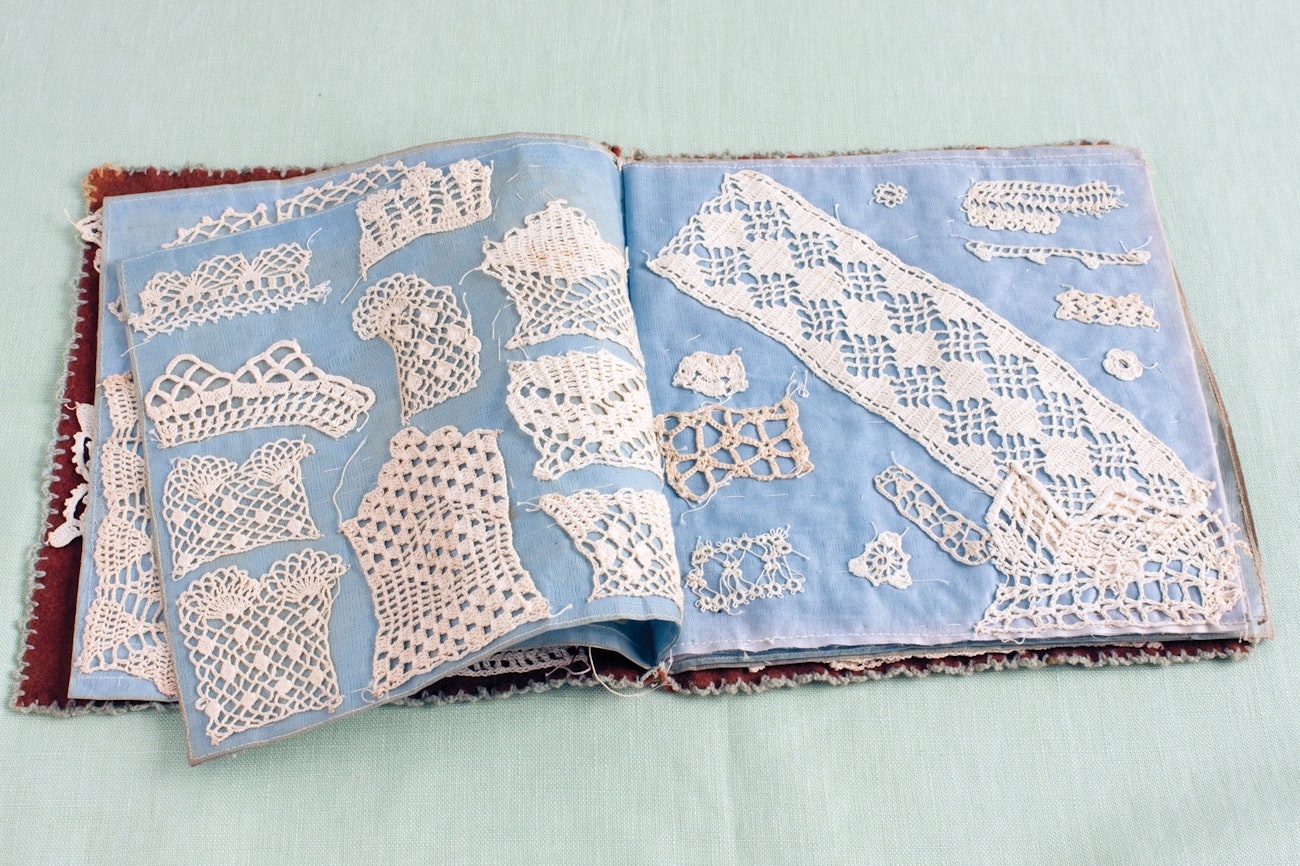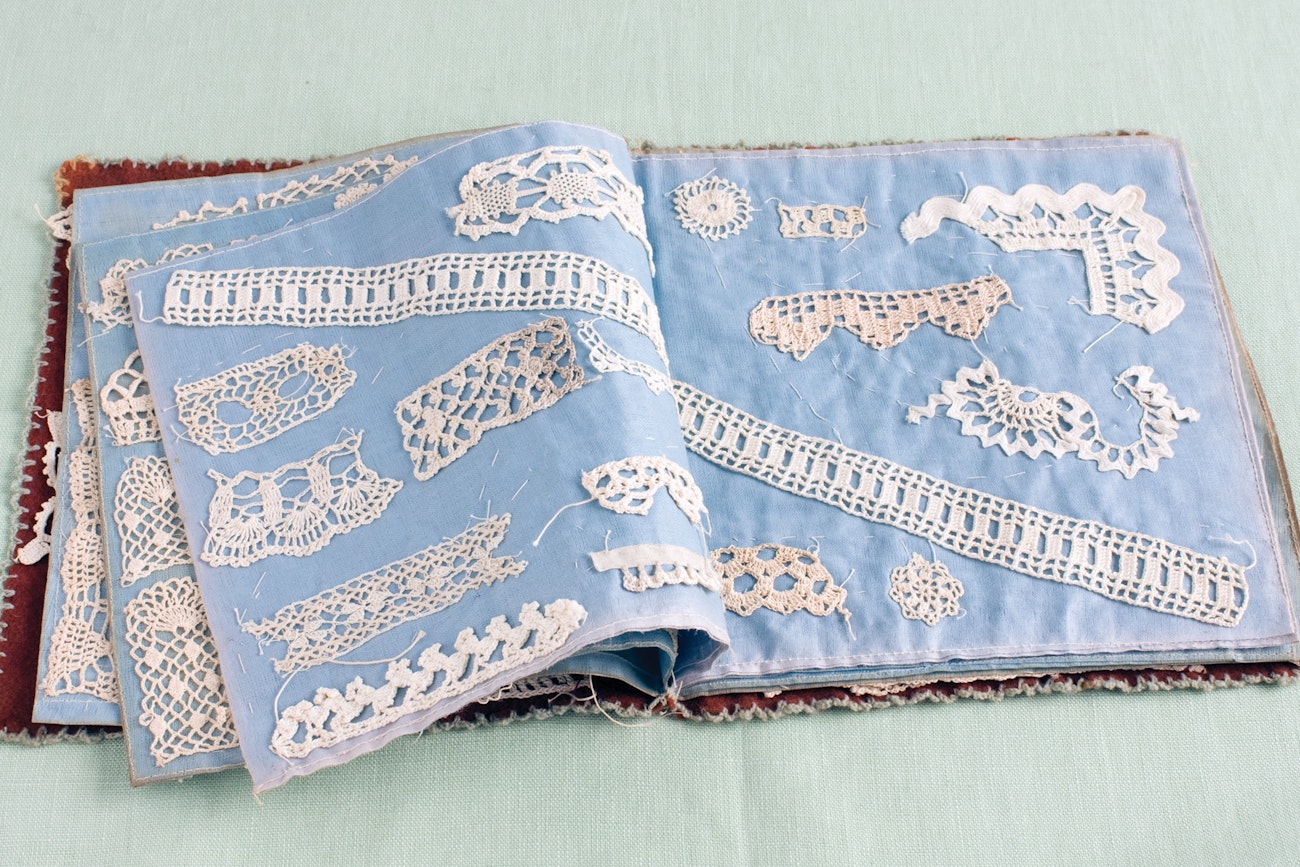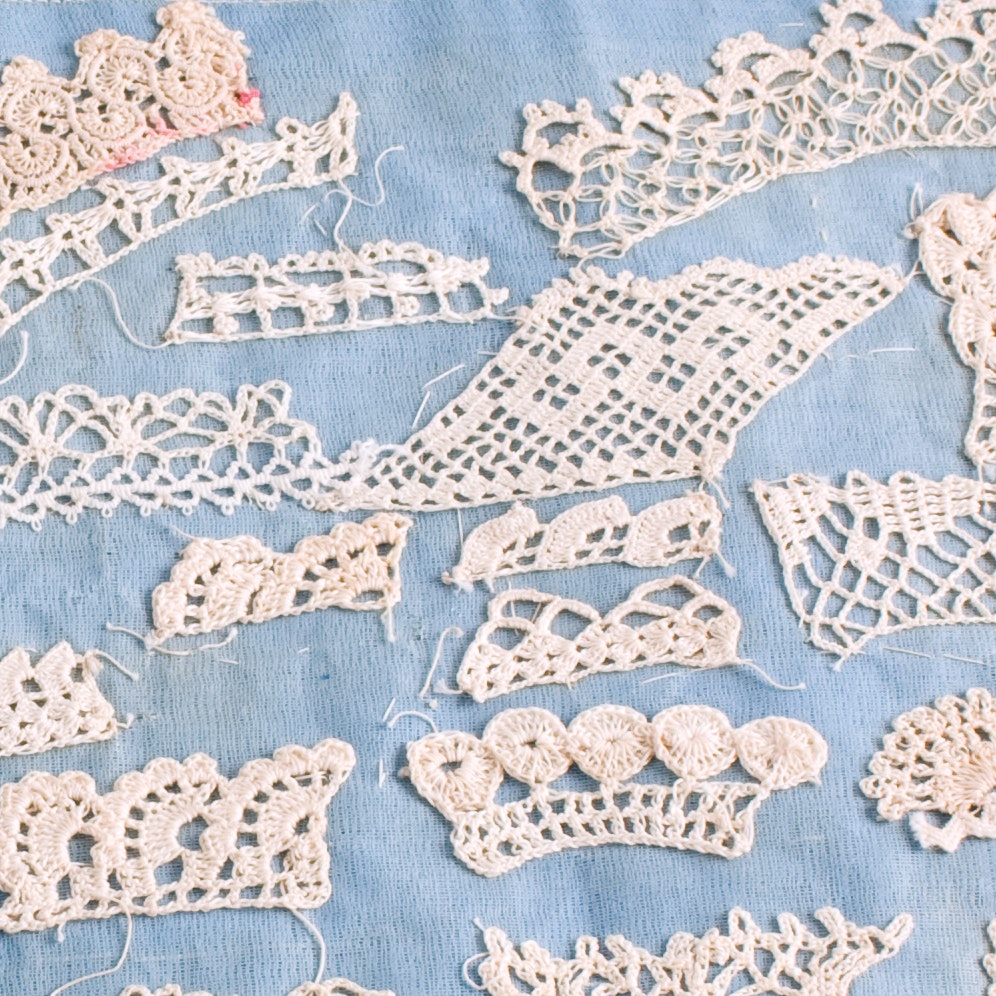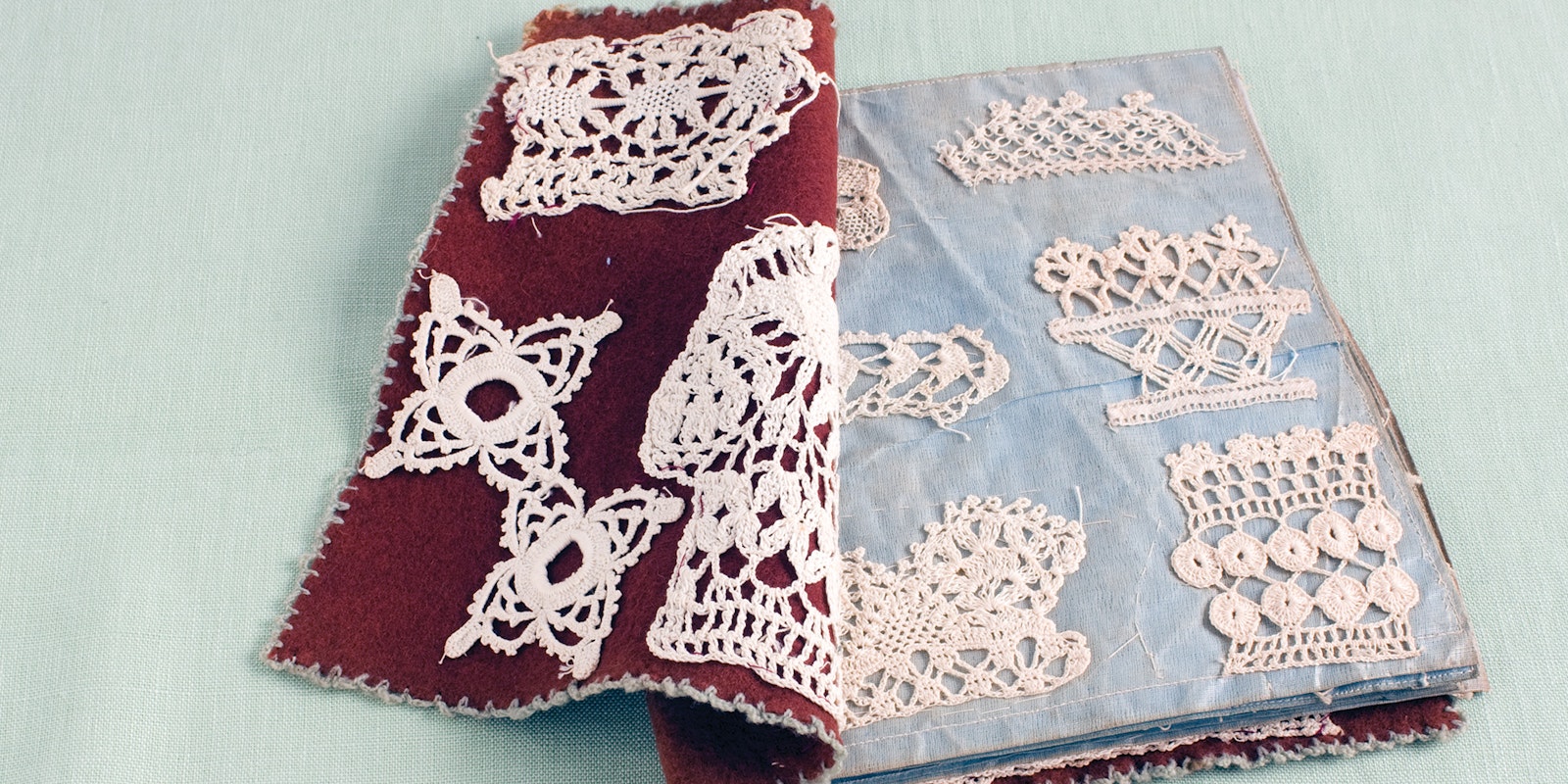I’m close to eighty, and this handmade book of crocheted samples (with the odd tatting sample here and there) for edgings and insertions has been in my possession for at least thirty years. The book, bound in wool felt with a contrasting simple crocheted edging, comprises more than 100 samples sewn onto its twelve polished-cotton pages and inside covers, as well as two loose samples. Most were worked in very fine white or ecru cotton thread with a small crochet hook.

Two pages from Jane Moody’s crochet sample book. Twenty-two samples are sewn to the polished-cotton pages.

Two polished-cotton pages from Jane Moody’s crochet sample book. One edging is sewn across both of the pages.

Detail of a polished-cotton page from Jane Moody’s crochet sample book.
Unfortunately, I know nothing about the person who assembled the sample book. While it’s true that sample books and samplers were made during the centuries before commercial patterns became generally available, education also played a role: Until the middle decades of the twentieth century, many women, in many countries including the United States, received little traditional schooling, but they were taught what to do with a needle or crochet hook and could understand how to reconstruct a finished piece just by looking at it. Perhaps the original owner of this sample book had this ability.
Interested in learning more about samplers? This article and more can be found in the July/August 2010 issue of PieceWork.
Also, remember that if you are an active subscriber to PieceWork magazine, you have unlimited access to previous issues, including July/August 2010. See our help center for the step-by-step process on how to access them.
Jane Moody learned to crochet in grammar school; later, her grandmother was a wonderful mentor and inspiration.
Originally published August 28, 2020; updated June 17, 2024.

